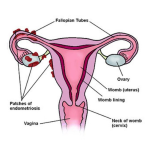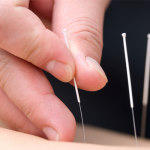CRPS (Complex Regional Pain Syndrome) is a severe medical condition that affects the legs, feet, and other body parts. It is an excruciatingly painful disease of the autonomic and central nervous system that usually causes inflammation in the affected body parts. CRPS in the ankle usually occurs due to a malfunction in the nervous and immune systems of the body when responding to tissue damage. The nerve connections develop a fault and begin to misfire because of the malfunction, leaving the affected ankle in constant pain.
Typically, the immune system and the central nervous system respond abnormally to the nerve malfunction, worsening the pain and causing physical changes in the color and texture of the affected ankle. Nevertheless, the pain level and extent of physical changes that the body undergoes due to CRPS varies from person to person.
Table of Contents
Causes of CRPS in the Ankle
Many cases of CRPS in the ankle occur due to trauma such as a crush injury, fracture, or amputation. One distinctive feature of CRPS is that the pain a patient experiences is far worse than the initial injury. So, a person could start experiencing excruciating pain after a minor ankle sprain.
Other possible causes of CRPS in the ankle are surgical procedures, limb immobilization in a cast for a long period, degenerative arthritis, breast cancer, shingles, nerve irritation, and heart diseases. The exact mechanism of CRPS development or progression is not fully understood. As medical science advances, the list of possible causes of CRPS in the ankle constantly increases.
CRPS is broadly classified into two major categories, depending on whether the initial trauma or incident caused nerve damage in the affected limb. The two types of CRPS that could occur in the ankle are:
- Type I CRPS: It accounts for most cases of CRPS in the ankle. This type of CRPS, also known as reflex sympathetic dystrophy syndrome, occurs due to an injury, trauma, or illness that did not directly damage the nerves in the affected limb
- Type II CRPS: This type of CRPS, also called causalgia, occurs due to an injury, trauma, or illness that caused a distinct injury to the nerves in the affected limb
Symptoms of CRPS in the Ankle
CRPS in the ankle or foot typically follows three stages of development. They are:
Stage 1: This stage usually lasts one to three months. It is characterized by severe burning pain that increases with even a slight touch, skin temperature fluctuations between warm and cold, and rapid hair and nail growth on the affected limb. Also, a person could experience muscle spasms, joint pain, and changes in their skin color and texture during this stage.
Stage 2: This stage often lasts between three to six months, during which the symptoms progress. The pain level increases, joints stiffen, muscles weaken, the skin changes continue, and the nail becomes brittle. At this point, the abnormal hair growth on the affected limb usually slows down.
Stage 3: If CRPS in the ankle or foot remains untreated up till this point, it becomes too painful and extremely difficult to move the affected limb. As a result, the tendons and muscles atrophy, causing contractures of the affected foot which can become permanent.
Treatment of CRPS in the Ankle
It’s best to treat CRPS early to slow the progression of the disease, relieve symptoms, and help restore the affected limb to its normal function. Patients suffering from CRPS in the ankle or foot often report co-concurrent diagnoses such as plantar fasciitis, the loss of fat pad in the feet, and the loss of motion in the foot, toe, and ankle joints. That’s why treatment should be for the body as a whole and not just for the symptoms on the affected ankle or foot.
According to The Spero Clinic, a neurologic relief center, ”Symptom numbing is an ineffective and short-term solution. Treatment for CRPS in the foot should be approached holistically to get to the root cause of pain rather than just treating the symptoms.” Some treatments for CRPS are non-invasive, while others require invasive surgical procedures.
Non-invasive Treatments
The non-invasive treatments for CRPS include prescription and non-prescription pain medication (such as NSAIDs), blood pressure medication, and antidepressants. Also, physical or occupational therapy can help prevent the loss of muscle tissue, restore motion to the affected limb, and maintain flexibility. Psychological support through counseling can help combat the anxiety and depression that are common in CRPS patients.
Invasive Treatments
Some of the invasive treatments for CRPS are spinal cord stimulation, sympathetic ganglion block, anesthetics, and surgery which is usually reserved for the most severe CRPS cases.







